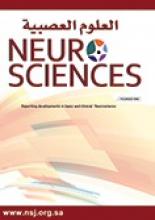Abstract
OBJECTIVE: To assess the feasibility and result of endovascular treatments for ruptured peripheral intracranial aneurysms.
METHODS: We retrospectively reviewed our experience and results of endovascular treatments for a series of 18 consecutive patients with ruptured distal intracranial aneurysms at the Department of Neurosurgery, Southwest Hospital, Chongqing, China between January 2005 and June 2010. Depending on the location and shape of the aneurysms, we used various therapeutic strategies including selective aneurysmal coiling, parent artery (and aneurysm) occlusion, stent-assisted coiling, and microcatheter-assisted coiling.
RESULTS: Endovascular embolization was technically successful in all patients. Five patients were treated by selective aneurysm coiling; 5 patients were embolized with the stent-assisted technique or microcatheter-assisted technique. In the remaining 8 patients, the parent arteries, or together with the aneurysms were occluded using coils or glue. No procedure complication such as thrombosis or aneurysmal rupture was encountered during treatment. Two patients treated with parent artery occlusion developed acute or delayed transient ischemic symptoms, but they eventually made a good recovery. No patient has experienced postprocedural hemorrhage during the follow-up period (5-66 months; mean, 22.2 months).
CONCLUSION: Endovascular treatment is a feasible and effective therapeutic alternative for peripheral intracranial aneurysms.
- Copyright: © Neurosciences
Neurosciences is an Open Access journal and articles published are distributed under the terms of the Creative Commons Attribution-NonCommercial License (CC BY-NC). Readers may copy, distribute, and display the work for non-commercial purposes with the proper citation of the original work.






